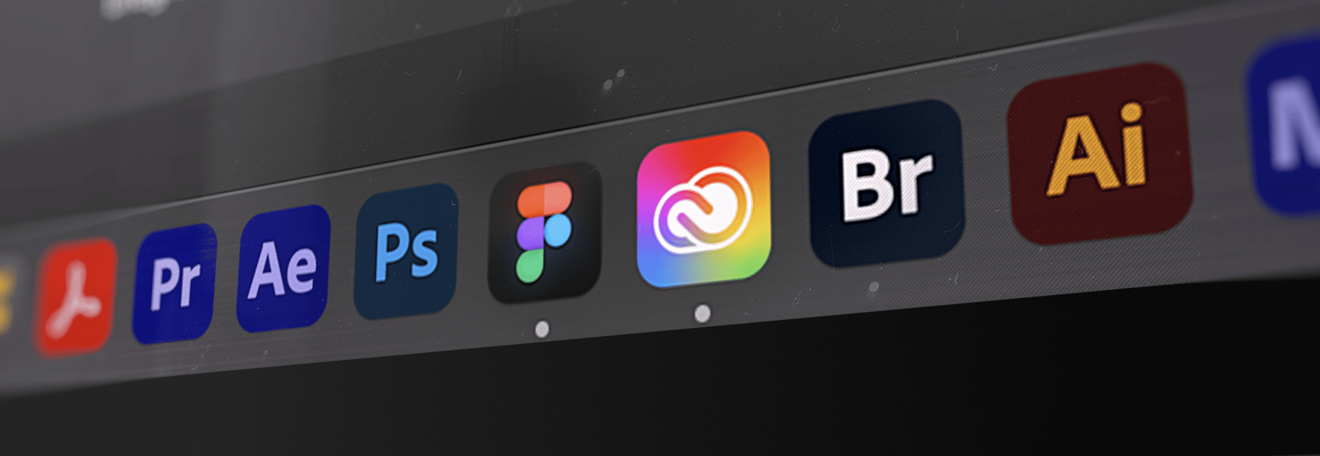Contributing expert: Alexander Pryshyvalka,
UX Engineer at Coherent Solutions
I was always certain that only those who are trained in understanding musical notation and playing a musical instrument are allowed to create music and are considered to be musicians. I’m not one of these people. That’s why I’ve never even thought about playing music. However, I’m definitely into music. Since my teenage years, it has been a substantial part of my life; when there's no music around, I feel like something is missing.
What You’ll Learn: How Improvisation Enhances Design Synthesis
-
Why improvisational music can help designers practice ambiguity and decision-making in real time.
-
What core design competencies (e.g. navigating ambiguity, synthesizing information) overlap with improv.
-
How frameworks like the “Analysis-Synthesis Bridge Model” illuminate the synthesis process.
-
Concrete actions and mindset shifts to bring improv’s benefits into design practice.
From Music to Design: Why Improvisation Matters
I first heard about Minsk Improvisers Orchestra (MIO) in 2019. It was organized by composer and musician Alexey Vorsoba in Minsk, Belarus. When I came to the first meetup, I was surprised to discover that a lack of special musical training might not be a problem, at least to some extent. Moreover, it doesn’t prevent one from creating (not just playing!) music. This means that the world of music is basically open to almost everyone who is eager to participate.
In fact, during that very first meetup, we began practicing playing music. It’s not as simple as it may seem from my brief description, but we managed to do it. However, during our later meetups and rehearsals, I witnessed professional musicians getting stuck because of the absence of familiar music scores and struggling to understand what was happening and how to proceed.
There are several types of improvised music; what we practiced is so called conducted improvisation. This means that there was a conductor who directed our performances. In addition to the performances, we had regular rehearsals during which we were developing our skills through various exercises.
We performed several concerts at various venues. Unfortunately, MIO no longer exists. The reason is that most of us had to leave Belarus due to the political situation in 2020 and now we live in different counties. It was a real pleasure and one of my formative experiences that continues to inspire me even two years later.
Key Lessons from Orchestra Improvisation
Thanks to my experience with MIO, I’ve made several important discoveries:
-
Interaction. Improvising with an orchestra involves a specific interaction between its participants. This means maintaining the highest level of concentration. By paying full attention, participants can listen to each other and grasp the entire musical landscape at any given moment.
-
Silence. Such keen interaction is crucial for participants to decide when to step in and make sound. It also allows them to understand when it’s better to remain silent, creating space for others to make sounds. Being silent is also a form of interaction and participation. Silence is both valuable and meaningful.
-
Sense. Playing improvisation is about making sense of what an observer might perceive as a mishmash. Through subjective interpretations and spontaneous patterns, an unusual narrative emerges.
-
Uncertainty. There is a great deal of personal freedom when it comes to improvisation. Both ambiguity and uncertainty transform into a multitude of possibilities.
-
Mistakes. There’s no single right answer; therefore, there are no mistakes. Instead, there are various prospects.
-
Personal responsibility. When improvising with an orchestra, every sound from each participant counts and changes the overall musical direction. Since there’s a substantial degree of personal freedom, every decision is not only influenced by the past, but also shapes the collective future. We all continuously contribute to a shared decision about what the future will sound like, and there’s no way to stay aside.
Now that the idea of playing improvised music is outlined, let’s delve into design synthesis and the issues surrounding it.
The Problem with Design Synthesis
One of the most thought-provoking texts that I came across recently was the article by Jon Kolko. I’ll be referring to it further.
The article clarifies what synthesis in design practice is. It starts with the quote, “Good designers can create normalcy out of chaos” (Veen). Sounds inspiring, doesn’t it? The problem, however, is that the mechanics of this transition, which takes place behind the scenes, are unclear:
“Yet despite the acknowledged importance of this phase of the design process, there continues to appear something magical about synthesis when encountered in professional practice.
Why Synthesis Deserves More Attention
Because synthesis is frequently performed privately (“in the head” or “on scratch paper”), the outcome is all that is observed, and this only after the designer has explicitly begun the form-making portion of the design process.
While other aspects of the design process are visible to non-designers (such as drawing, which can be observed and generally grasped even by a naive and detached audience), synthesis is often a more insular activity, one that is less obviously understood, or even completely hidden from view” (Kolko).
I love the quote by Albert Einstein: “There are only two ways to live your life. One is as though nothing is a miracle. The other is as though everything is a miracle.” And yet, when it comes to design synthesis, there seems to be no magic. “These principles and methods are teachable, repeatable, and understandable. They are creative activities that actively generate intellectual value, and they are unique to the discipline of design” (Kolko).
Apparently, the process of synthesis can be formalized. This is what really sounds inspiring to me. It means that we as designers can understand how it works, develop this skill, and teach others.
The Design Process as a Balance of Analysis and Synthesis
There are various ways to describe a design process, so in this article, we will explore different ways to describe it, with a specific emphasis on the crucial interplay between analysis and synthesis.
As The Innovation Process as Learning Model suggests, “this process moves its participants between the concrete and the abstract worlds, and it alternately uses analysis and synthesis to generate new products, services, business models, and other designs” (Beckman, Barry). It can be organized as a two-by-two matrix.

“The left column represents analysis (the problem, current situation, research, constituent needs, context). The right column represents synthesis (the solution, preferred future, concept, proposed response, form). The bottom row represents the concrete world we inhabit or could inhabit. The top row represents abstractions, models of what is or what could be, which we imagine and share with others.” (The Analysis-Synthesis Bridge Model)
Based on this model, it is easier to spot a designer’s core abilities.
The Core Designer Competencies: Ambiguity and Information Synthesis
There are 8 core designer’s abilities listed by Stanford school.
Two of them — navigate ambiguity and synthesize information — are particularly relevant for understanding the essence of the process that was referred to as “creating normalcy out of chaos”. These two abilities are described in the following manner:
-
Navigate ambiguity is “the ability to recognize and persist in the discomfort of not knowing, and develop tactics to overcome ambiguity when needed. It involves being present in the moment, re-framing problems, and finding patterns in information.”
-
Synthesize information is “the ability to make sense of information and find insight and opportunity within. This ability requires skills in developing frameworks, maps, and abductive thinking. It takes time and is interdependent with navigating ambiguity.”
So, in terms of design synthesis we have two related abilities which will be considered in the first place. There are two more abilities that are relevant as well: Learn from others and Experiment rapidly. We’ll take them into account a bit later.
Let’s get back to the Jon Kolko’s article and learn more about design synthesis.
Design synthesis explained
“Synthesis is an abductive sense making process”, states the article that I’m referring to. Synthesis there is described starting from logical and cognitive background to specific actions.
Sensemaking
“Klein, Moon, and Hoffman define sensemaking as ‘a motivated, continuous effort to understand connections (which can be among people, places, and events) in order to anticipate their trajectories and act effectively, emphasis is placed on finding relationships and patterns between elements, and forcing an external view of things. In all of the methods, it is less important to be “accurate” and more important to give some abstract and tangible form to the ideas, thoughts and reflections.”
Let’s do some analysis and distill several essential characteristics of sensemaking. They are:
-
Content: a process of understanding relationships and patterns between elements
-
Direction: a step from concrete towards the abstract realm
-
Aim: to forge a tangible form to the ideas & thoughts to be able to externalize them.
Abduction
“Abduction can be thought of as the argument to the best explanation. It is the hypothesis that makes the most sense given observed phenomenon or data and based on prior experience. Abduction is a logical way of considering inference or “best guess” leaps. Consider the example:
When I do A, B occurs:
I’ve done something like A before, but the circumstances weren’t exactly the same.
I’ve seen something like B before, but the circumstances weren’t exactly the same.
I’m able to abduct that C is the reason B is occurring.
Unlike deduction or induction, abductive logic allows for the creation of new knowledge and insight — C is introduced as a best guess for why B is occurring, yet C is not part of the original set of premises. And unlike deduction, but similarly true to induction, the conclusions from an abductive argument might turn out to be false, even if the premises are true.”
The following several characteristics of abduction are essential here:
-
Content: introduced hypothesis as a result of previous experience in reasoning about the original premises, not the original premises themselves
-
Aim: to pursue the best explanation of why something is the case
-
Direction: from some original premises towards a hypothetical explanation, possibly wrong though.
Design synthesis framework
The theoretical assumptions described above get realized in practice via specific types of actions. There are three of them:
-
Prioritizing: “Data prioritization will eventually identify multiple elements that can be seen as complementary, and thus a hierarchical data structure is created”.
-
Judging: “…the definition of relevance, as the designer will pass the gathered data “through a large sieve” in order to determine what is most significant in the current problem-solving context”.
-
Forging connections: “Identifying a relationship forces the introduction of a credible (although rarely validated) story of why the elements are related”.
Parallels Between Improvisational Music and Design Practice
Overlap in constraints
Similar to design ideas, improv music is not something coming out of the blue. What we were performing in MIO was definitely not merely noise consisting of a random sound:
Improv is not accidental: the orchestra had an idea of what to play. There was a certain theme for each piece of music.
Improv is not meaningless: each musician understood how to play a particular piece of music. We spent a great deal of time during rehearsals to experiment, train various techniques, and master interplay among ourselves.
Thus, the music we made in MIO was the fruit of deliberate efforts and plenty of sensible decisions. The same applies to any design project that is also neither accidental nor meaningless; it takes place within well-defined constraints that are rooted in solid answers to Why? Who? When? Where? What? How? questions.
Overlap in actions
There is an overlap between playing improv music and design in terms of actions. The essential actions while playing improv are as follows:
-
embracing the lack of the perfect plan and adapting to what comes next
-
understanding connections between seemingly unrelated pieces and combining them into chunks
-
determining the most significant prospect to follow
-
derive sense out of meaning
-
making hypotheses and experimenting on the go
-
revealing new possibilities through changing perspectives.
Basically, this list of actions corresponds to the design synthesis framework described above.
Overlap in abilities
Actions are performed due to one’s personal abilities. Hence, there’s an underlying overlap that embrace abilities ensuring those corresponding actions. Remember two abilities from the d.school’s list — Navigate ambiguity and Synthesize information? Overlaping actions listed above fit nicely in the descriptions of those two abilities. Thus, navigating ambiguity and synthesizing information can be considered as common abilities for playing improv and design synthesis.
Interestingly, all 8 core designer’s abilities mentioned above are referred to as “higher-order set of design abilities that represent creative competencies” (Introduction to Design Abilities Suite). It means that they are applicable to creativity as a human feature, regardless of a particular application or a domain. Therefore, being a general set of creative competences, they can potentially be trained or exercised through activities other than design per set.
How Improv Exercises Can Boost Design Skills
What is particularly inspiring is that the ability to synthesize in design can potentially be trained by means of playing improv.
Why this can be helpful?
Firstly, because playing improv music in a group of people is highly accessible. Admission requirements to participate are quite low. What is necessary is open-mindedness, curiosity, interest in music; no special music training is required, at least to some extent. It means that novice designers or design students can start practicing without prior training or without having any idea of a specific design process.
Secondly, playing improv can help in exercising creative competences which are directly related to design synthesis — Navigate ambiguity and Synthesize information.
Thirdly, other creative competences as per d.school can be exercised as well:
-
Experimenting rapidly: “This ability is about being able to quickly generate ideas — whether written, drawn, or built”. While playing improv music, one should make tons of decisions per unit of time, test them and receive feedback in order to start a new loop of decision making.
-
Learning from others (people and contexts): “This means empathizing with and embracing diverse viewpoints, testing new ideas with others, and observing and learning from unfamiliar contexts”. For non-musicians, playing music in a group is a great way to learn from other people, while playing music at all is both a challenge and a possibility to learn from other contexts.
Final Reflections: What Improvisation Teaches Designer
Playing improv music seems like a promising method to train the ability to synthesize and even more, involving 4 out of 8 designer’s abilities from the d.school’s list:
-
Synthesize information,
-
Navigate ambiguity,
-
Learning from others (people and contexts),
-
Experimenting rapidly.
Once started playing, there’s much more one can learn and derive personally. And I hope, Alexey Vorsoba (MIO founder) will soon finish his book and shed more light on many fascinating ideas around improv music.
Read also: How Practicing Photography Can Enhance a Designer’s Skills
FAQs of Design Synthesis Competences
-
The Analysis–Synthesis Bridge Model is a framework that describes design as a movement between analysis (understanding the problem and current situation) and synthesis (creating solutions and envisioning the future). It organizes the process into a two-by-two matrix of concrete vs. abstract, helping designers navigate complexity.
-
Analysis breaks down the current situation into parts to understand needs, context, and constraints, while synthesis combines insights to generate possible solutions. Moving between them allows designers to refine both the problem and the solution iteratively.
-
The concrete level deals with real-world observations and artifacts, while the abstract level helps designers create models and frameworks that explain or predict. Shifting between the two gives a fuller picture of the problem and leads to more effective, innovative solutions.
-
By practicing the analysis–synthesis framework, designers strengthen key abilities such as handling ambiguity, framing problems, synthesizing insights, and envisioning future states. These competencies are critical for tackling complex design challenges.



